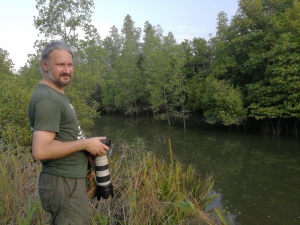Li, J.-Y., Chen, Y.-T., Shi, M.-Z., Li, J.-W., Xu, R.-B., Pozsgai, G. & You, M.-S. (2021) Spatio-temporal distribution patterns of Plutella xylostella (Lepidoptera: Plutellidae) in a fine-scale agricultural landscape based on geostatistical analysis.
Scientific Reports,
11, 13622. DOI:10.1038/s41598-021-92562-9 (IF2021 4,997; Q1 Multidisciplinary Sciences)
NON-cE3c affiliated
A detailed knowledge on the spatial distribution of pests is crucial for predicting population outbreaks or developing control strategies and sustainable management plans. The diamondback moth, Plutella xylostella, is one of the most destructive pests of cruciferous crops worldwide. Despite the abundant research on the species’s ecology, little is known about the spatio-temporal pattern of P. xylostella in an agricultural landscape. Therefore, in this study, the spatial distribution of P. xylostella was characterized to assess the effect of landscape elements in a fine-scale agricultural landscape by geostatistical analysis. The P. xylostella adults captured by pheromone-baited traps showed a seasonal pattern of population fluctuation from October 2015 to September 2017, with a marked peak in spring, suggesting that mild temperatures, 15–25 °C, are favorable for P. xylostella. Geostatistics (GS) correlograms fitted with spherical and Gaussian models showed an aggregated distribution in 21 of the 47 cases interpolation contour maps. This result highlighted that spatial distribution of P. xylostella was not limited to the Brassica vegetable field, but presence was the highest there. Nevertheless, population aggregations also showed a seasonal variation associated with the growing stage of host plants. GS model analysis showed higher abundances in cruciferous fields than in any other patches of the landscape, indicating a strong host plant dependency. We demonstrate that Brassica vegetables distribution and growth stage, have dominant impacts on the spatial distribution of P. xylostella in a fine-scale landscape. This work clarified the spatio-temporal dynamic and distribution patterns of P. xylostella in an agricultural landscape, and the distribution model developed by geostatistical analysis can provide a scientific basis for precise targeting and localized control of P. xylostella.

